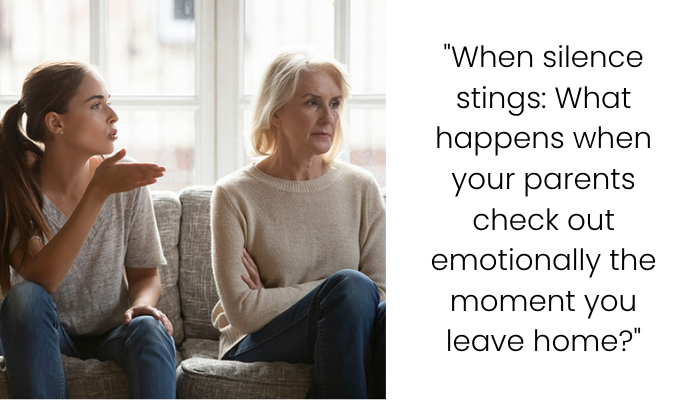When ‘Decluttering’ Becomes Control: A Partner’s Disregard for Personal Boundaries

In a distressing account, a woman shares her experience of betrayal and emotional turmoil after her boyfriend unilaterally discarded her personal belongings, labeling them as “junk.” Having already suffered significant losses due to past abuse, the few items she possessed held immense sentimental value. Discovering her cherished possessions in the dumpster, she was met not with remorse but with mockery, as her boyfriend laughed and dismissed her feelings, accusing her of being a “hoarding child.” This incident not only highlights a profound lack of respect for personal boundaries but also raises concerns about emotional abuse within intimate relationships.
Advertisement – Continue Reading Below
Living together as a couple can come with its ups and downs, but nothing could have prepared this woman for what her boyfriend did

Without asking her, he went through all her belongings while she was out and took it upon himself to throw a lot of them away

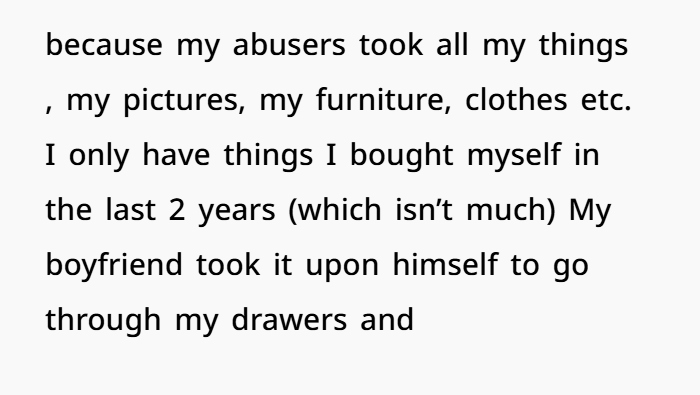
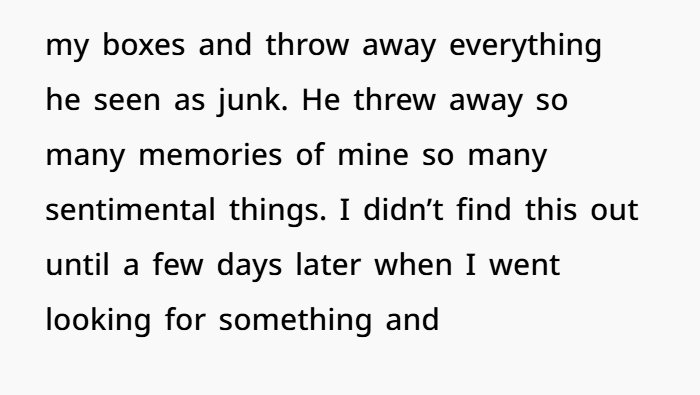
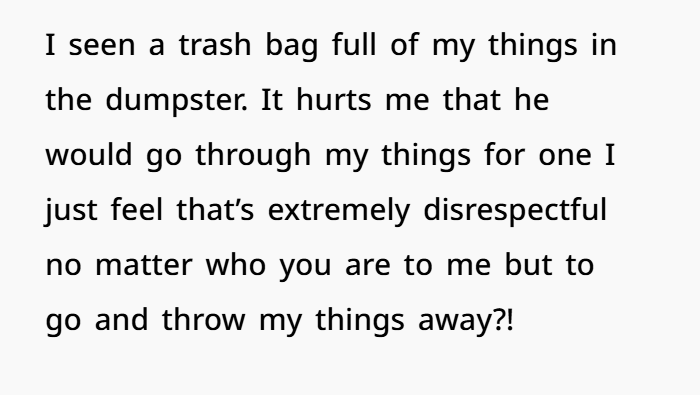
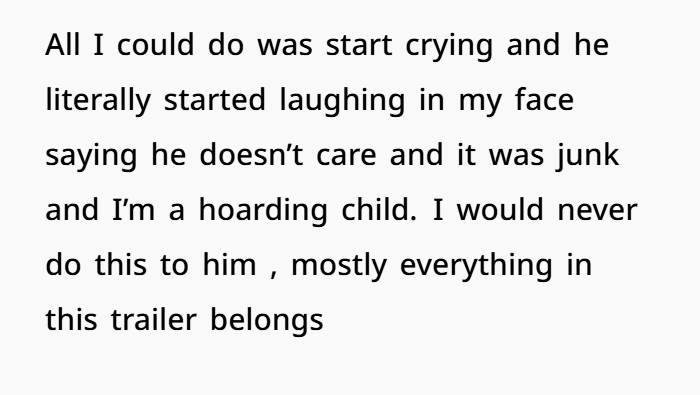
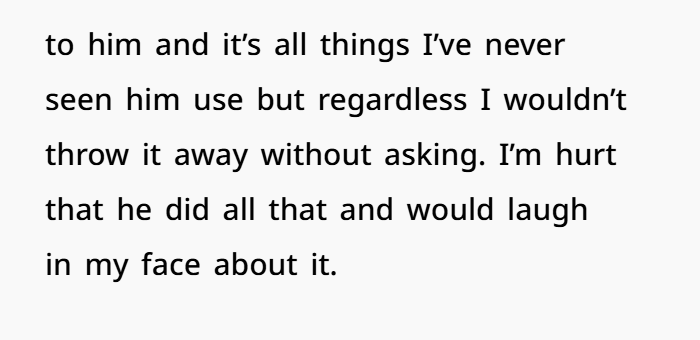
When Love Crosses the Line—Recognizing Emotional Abuse in the Disguise of Decluttering
In the intimate confines of a shared living space, especially one as compact as a trailer, the boundaries between personal belongings and communal areas can blur. However, the sanctity of individual possessions, particularly those imbued with sentimental value, remains paramount. The distressing account of a woman discovering her cherished items discarded by her partner under the guise of decluttering brings to light the often-overlooked facets of emotional abuse.
Advertisement – Continue Reading Below
The Silent Erosion of Personal Boundaries
At the heart of this incident lies a profound violation of personal boundaries. The unilateral decision to dispose of another’s belongings without consent is not merely an overstep; it’s a manifestation of control. Emotional abuse often begins subtly, with actions that may seem inconsequential but gradually erode the victim’s autonomy and sense of self. According to Women’s Law, such behaviors can include “destroying or threatening to destroy your belongings,” a tactic employed to assert dominance and diminish the victim’s sense of security.
Gaslighting: Dismissing the Validity of Emotions
Advertisement – Continue Reading Below
The partner’s reaction—laughing at the woman’s distress and belittling her as a “hoarding child”—is emblematic of gaslighting. This psychological manipulation technique aims to make individuals doubt their perceptions, memories, and feelings. By trivializing her emotional response, the partner not only invalidates her feelings but also attempts to redefine the narrative, positioning himself as the rational party and her as irrational. Such dynamics are characteristic of narcissistic abuse, where the abuser seeks to control and dominate by undermining the victim’s reality.
The Weight of Sentimental Objects
For survivors of trauma, possessions often serve as tangible links to their identity and past. In this case, the woman’s limited belongings, acquired post-abuse, likely held profound significance, symbolizing resilience and a reclaimed sense of self. The act of discarding these items is not just a physical loss but an emotional affront, stripping away the few remnants of her personal history and achievements.
Advertisement – Continue Reading Below
Recognizing the Broader Pattern of Abuse
While the immediate act involves the disposal of belongings, it’s essential to view this behavior within a broader context. Emotional abuse encompasses a range of actions designed to control, isolate, and demean. The partner’s dismissive attitude, coupled with the unilateral decision-making and ridicule, aligns with patterns of psychological abuse aimed at diminishing the victim’s autonomy and self-worth.
Steps Towards Empowerment and Healing
Advertisement – Continue Reading Below

Acknowledging the abuse is the first step towards healing. It’s crucial for individuals in similar situations to:
- Seek Support: Engage with trusted friends, family, or professional counselors who can provide perspective and assistance.
- Document Incidents: Keeping a record of abusive behaviors can be instrumental, especially if legal action becomes necessary.
- Establish Boundaries: Clearly communicate personal boundaries and the importance of mutual respect in shared spaces.
- Explore Legal Avenues: In regions like Punjab, Pakistan, resources such as the Punjab Commission on the Status of Women offer helplines and support for victims of domestic abuse.
- Prioritize Self-Care: Engage in activities that reinforce self-worth and well-being, reinforcing the individual’s identity outside the abusive relationship.
In the comments, readers slammed the woman’s boyfriend for being abusive and suggested she leave him before any more boundaries can be crossed
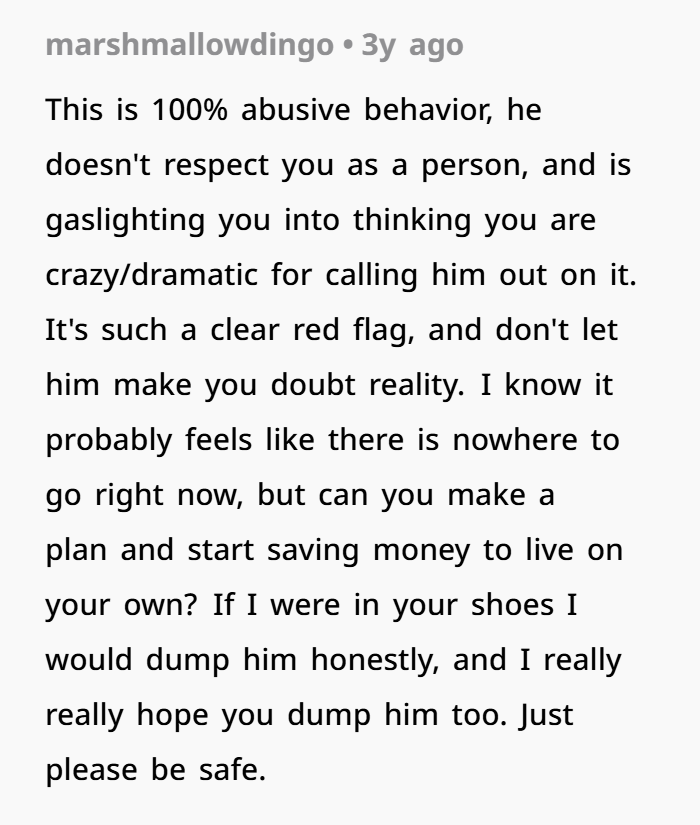

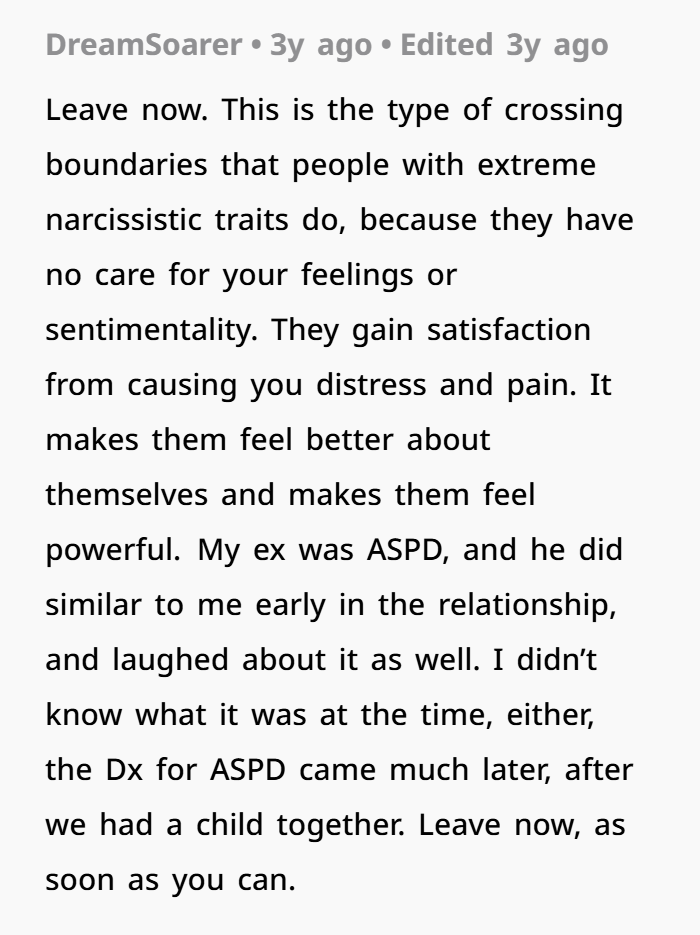
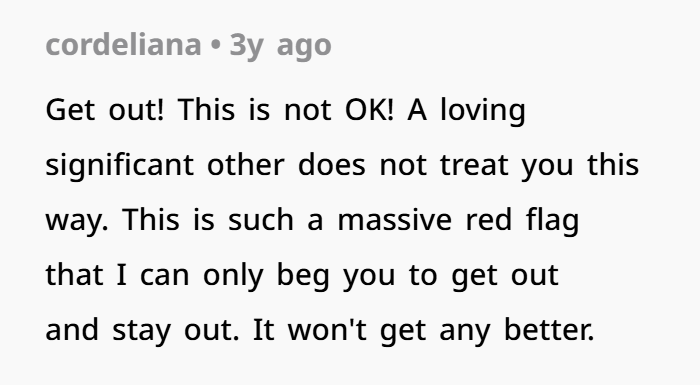
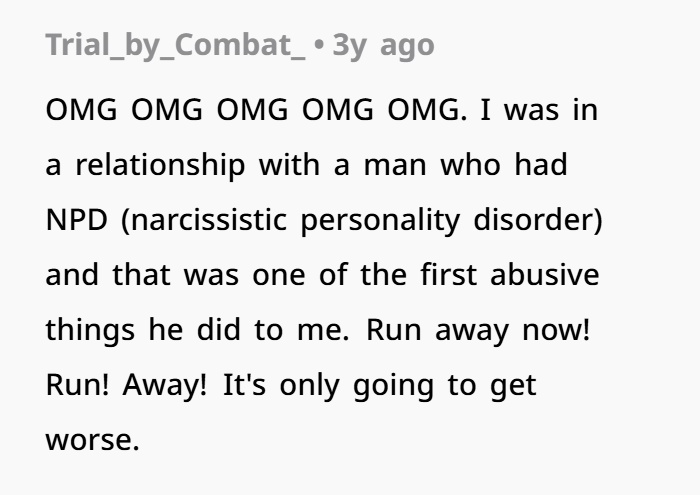
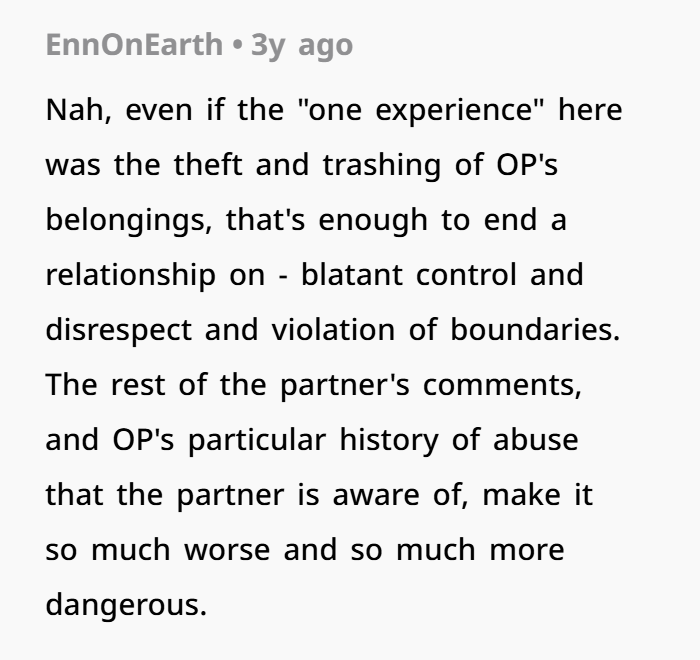
Conclusion: Reclaiming Autonomy and Dignity
The act of discarding a partner’s belongings without consent transcends mere insensitivity; it’s a deliberate attempt to control and diminish. Recognizing such behaviors as components of emotional abuse is vital in addressing and rectifying the imbalance in the relationship. Empowerment begins with acknowledgment, and healing is facilitated through support, self-care, and, when necessary, legal intervention. Every individual deserves respect, autonomy, and a safe environment to cherish their memories and belongings.
Advertisement – Continue Reading Below

